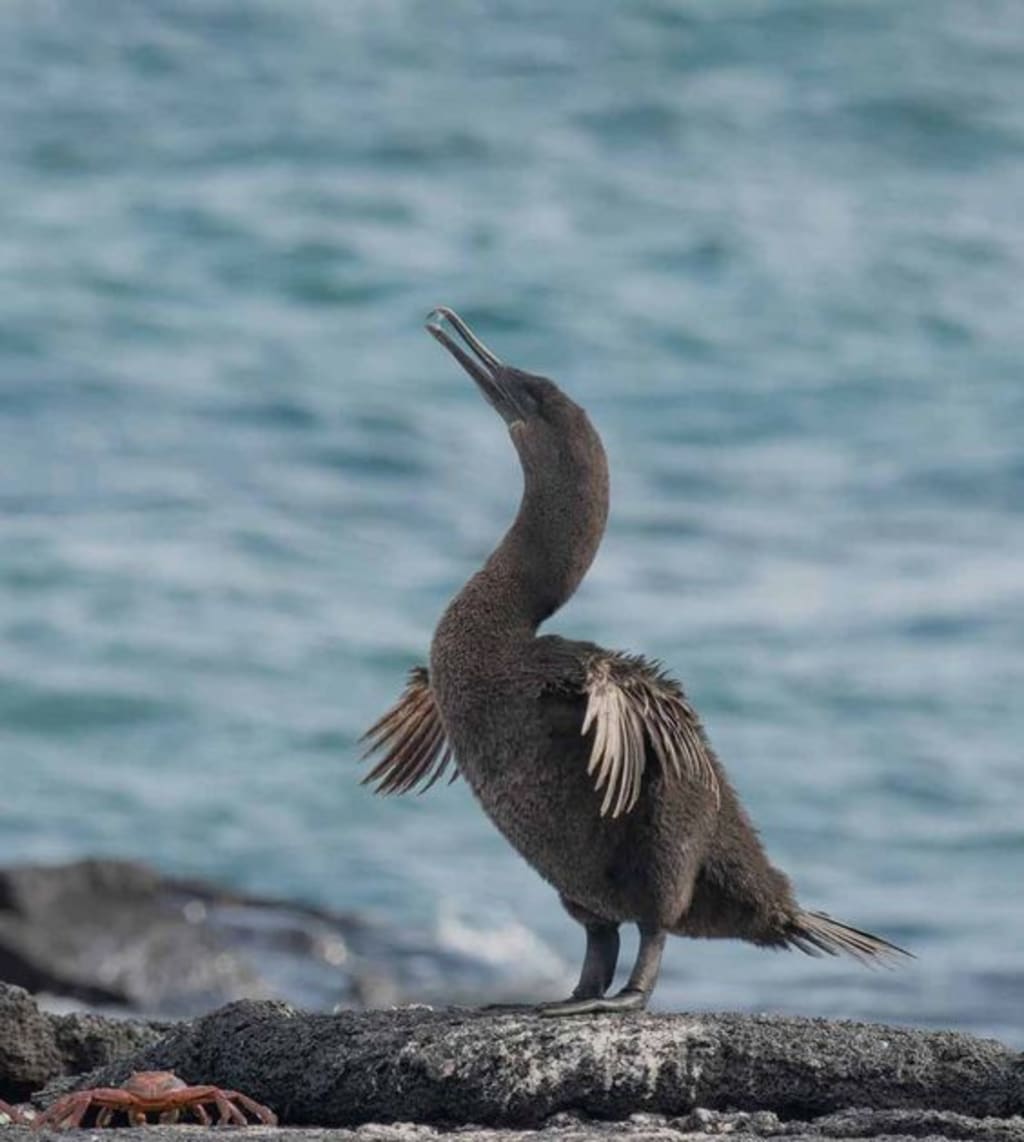Five Mind-Blowing Facts About the Flightless Cormorant: A Master of Marine Adaptation
Five Mind-Blowing Facts About the Flightless Cormorant: A Master of Marine Adaptation

Five Mind-Blowing Facts About the Flightless Cormorant: A Master of Marine Adaptation
Rising up out of the profundities of the Galapagos Islands, the flightless cormorant (Nphalacrocorax harrisi) remains as a demonstration of nature's striking flexibility. Dissimilar to direct relations smoothly explore the skies, the flightless cormorant has surrendered the capacity to take off, rather becoming amazing at submerged searching. With its novel transformations and entrancing ways of behaving, the flightless cormorant offers a brief look into the miracles of marine development.
1. A Jumping Virtuoso: Overcoming the Sea Profundities
The flightless cormorant has changed itself into an underwater subject matter expert, easily coasting through the profundities of the Galapagos waters. Its thick bones and smoothed out body permit it to plunge to noteworthy profundities, arriving at up to 150 feet in quest for its prey. Its strong feet, looking like oars, give impetus, while its webbed toes help in moving and catching slippery fish.
2. A Story of Transformative Compromises: Losing Trip for Jumping Ability
The flightless cormorant's powerlessness to fly is a consequence of a transformative compromise, forfeiting ethereal ability for upgraded jumping capacities. Over the long haul, the bird's pectoral muscles, vital for flight, have decreased, and its wings have decreased and more smaller. This decrease in flight muscles and wing size has permitted the cormorant to assign more energy towards its submerged interests.
3. A Harmonious Partnership: Fishing with Sharks
In a captivating showcase of interspecies collaboration, the flightless cormorant has fostered a harmonious relationship with Galapagos sharks. As the cormorant jumps for fish, it frequently upsets schools of prey, making fish dissipate in disarray. The crafty sharks, drawn by the disturbance, assemble beneath the cormorant's hunting grounds, enthusiastically grabbing up the perplexed fish that go in close vicinity to reach. This harmonious game plan benefits the two species, with the cormorant acquiring help with flushing out prey and the sharks partaking in a more straightforward feast.
4. A Collective Settlement: Sharing the Abundance
Flightless cormorants are exceptionally friendly birds, shaping huge provinces on rough shores and precipices. Inside these settlements, people display amazing collaboration, imparting their well deserved gets to individual cormorants. This way of behaving, known as food-sharing, is especially common among guardians and their posterity, guaranteeing that more youthful cormorants get satisfactory nourishment.
5. A Weak Endemic: Confronting Protection Difficulties
Notwithstanding its amazing transformations, the flightless cormorant faces a few protection challenges. Its confined appropriation to the Galapagos Islands and its particular natural surroundings necessities make it powerless against ecological unsettling influences, for example, environmental change and human exercises. Moreover, intrusive species, for example, rodents and felines, represent a danger to the cormorant's settling locales and prey populaces.
The flightless cormorant's story is a charming story of variation and strength. With its novel abilities to plunge, agreeable ways of behaving, and cooperative connections, the flightless cormorant represents the miracles of marine advancement. As we endeavor to save this captivating species, we safeguard a noteworthy bird as well as shield an essential part of the Galapagos Islands' sensitive biological system.
The flightless cormorant's underwater prowess is not merely a matter of depth or speed; it's also a testament to its mastery of navigation. In the labyrinthine world of coral reefs and rocky crevices, the cormorant utilizes its keen senses and innate understanding of underwater currents to maneuver with precision. Its eyes, adapted for low-light conditions, allow it to detect prey even in murky waters, while its sensitive whiskers help it gauge distances and avoid obstacles.
The flightless cormorant is not an impulsive hunter; rather, it employs a strategy of patient waiting and opportunistic strikes. Unlike its aerial counterparts that actively chase after their prey, the flightless cormorant prefers to lurk in ambush, blending into its surroundings and conserving energy until the perfect moment presents itself. Its ability to hold its breath for extended periods allows it to remain submerged for up to a minute, increasing its chances of catching a passing fish.
About the Creator
Product Services
To learn about the world in a new and exciting way. I research a wide range of topics to uncover the Five most mind-blowing facts, from the natural world to human history to current events.






Comments
There are no comments for this story
Be the first to respond and start the conversation.